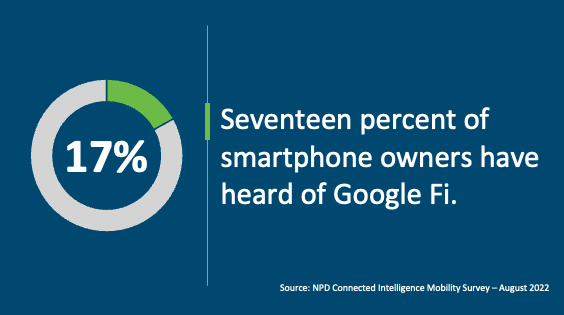
Free Fi for Local Guides
Select Google Maps Local Guides received offers of free trials of Google Fi wireless service through the rest of the year. That is nearly three months of service, and up to a $195 value. Local Guides are people who add reviews and photos to Google Maps, and the company is using this promotion to help thank them for their contributions and have them experience the Google Fi service. To participate, customers must port-in their phone number and be first-time Google Fi users.
The NPD Take:
- Google’s approach of offering 3 months of free service to Local Guides not only helps spread awareness of the company’s capabilities. It also specifically targets customers who are already interacting with Google in other forms, AND who already show a tendency to spread the word about places and products they experience. Giving free trials to frequent review writers might be one of the smartest test groups to help spread the word about Fi and further strengthen the Local Guides’ loyalty to the ecosystem. The publicity and exclusivity also create buzz among those who may not be eligible for the free access.
- There is a lot of competition in the MVNO space. Some offer steep discounts or service bundles (such as Mint Mobile’s six months free when you sign up for 12), while others go the free trial route. In the postpaid world, T-Mobile has a Network Pass program that allows prospective customers to try T-Mobile’s network free for three months. With eSIM awareness and availability growing, especially since the iPhone 14 announcement, these types of trials will only become easier, and consumers may enjoy the opportunity to try out new carriers risk-free, in turn feeling less tied to their current provider.
The Pixel 7 is finally here
The latest “Made by Google” event on October 6 included the launch of the company’s new flagship smartphones, the Pixel 7 and Pixel 7 Pro. Though the launch of the Pixel 7 was teased when the Pixel 6a launched, we finally get to see what the new flagship series has to offer. The announcement presented a clear emphasis on personalized experiences, convenience, security, and privacy with the Pixel 7 and 7 Pro. Convenience enhancements include call screening, improved voice recognition (for live translate, Google Assistant, app navigation, voice-to-text messaging) and background noise reduction (Call Assist). The new Google Tensor G2 processor enables photography innovations such as Magic Eraser and Real Tone (both already in the Pixel 6a), plus new blur-reducing and super-res zoom features to name a few. Key differences between the Pixel 7 and the 7 Pro are in the size (6.3” vs. 6.7”), the refresh rate (90 Hz vs. 120 Hz) and the camera systems (the Pro adds a third lens for telephoto). Users can also un-blur existing photos taken on other devices. There was a segment of the event focused on accessibility, where Google demonstrated new capabilities to help Pixel users who are blind capture selfies using audio cues. Sustainability was also a topic, as presenters explained the recycled materials used in each device and the impact to the carbon footprint.
Pricing for the two new models is the same as it was for the 6 Series: $599 for the Pixel 7 and $899 for the Pro. Google is offering a few ways to lighten the financial responsibility directly on their website, with 24-month financing, trade-in up to $750 off, and up to $200 Google Store credit toward their next purchase. The locked version of the Pixel 7 series is offered at steep discounts through the major postpaid carriers. The budget Pixel 7 is offered for three across all three carriers. Verizon, the exclusive launch partner of the original Pixel phone back in the day, also offers the high-end Pixel 7 Pro for free, while rivals AT&T and T-Mobile promote the flagship phone with a $800 discount.
The NPD Take:
- Many innovations debuted in the Google event were focused on imaging capabilities. Google’s dedication to accessibility, representation, and sustainability could also be big draws for consumers looking who are looking to shop more responsibly.
- The presenters mentioned that the Pixel 7 series comes with five years of security updates from Google for enhancements. This can potentially eliminate the fear-of-missing-out that might have prevented some shoppers from buying the new Pixel sooner. If customers are assured that they will still have the latest technologies five years from now via updates, they may not feel the need to wait for the next biggest thing. This also has the potential to extend the replacement cycle – if users have the latest software updates, it could postpone the need for more frequent hardware upgrades. Five years of security updates were also included with the Pixel 6 Series.
- Since the Pixel 7 was announced with the Pixel 6a launch, it will be interesting to see whether there is additional pent-up demand created by consumers’ awareness of the release five months prior to learning all of the details.
- The Pixel is priced very competitively when compared to other devices of similar camera caliber. While Apple has the advantage of their ecosystem loyalists, Google is positioning well for growth in a market, and it has been doing so without alienating its Android device partners. With the announcement of their expansion into tablets and smart watches, plus current smart home (Nest) and laptop (Chromebook) assortments, is it only a matter of time before Google accrues their own set of loyal adopters?